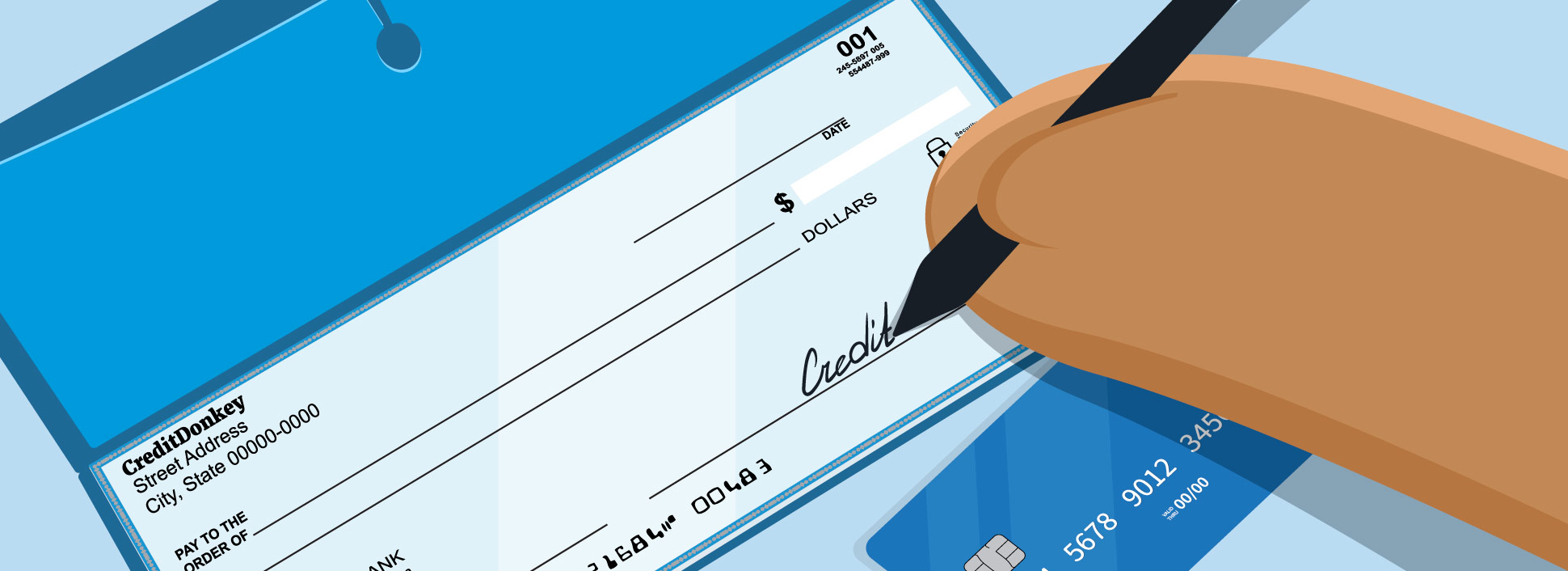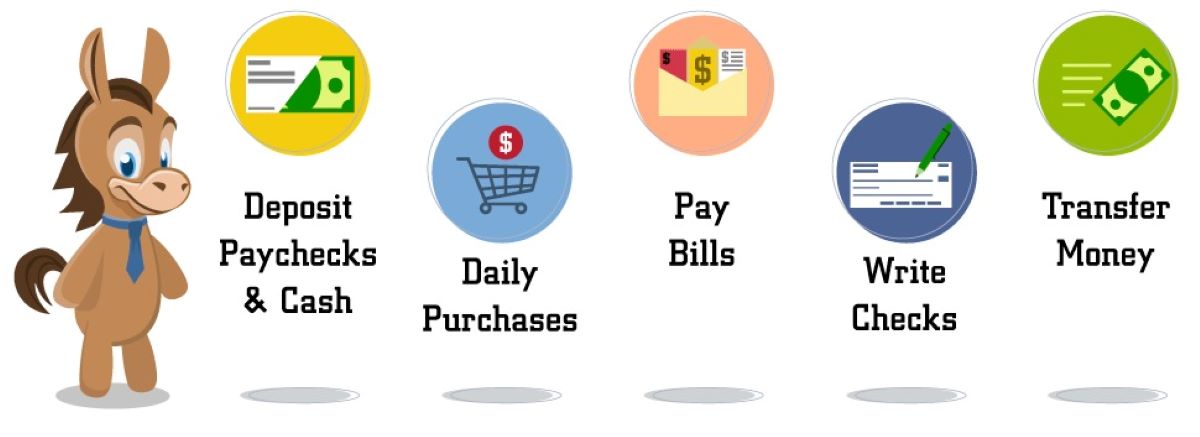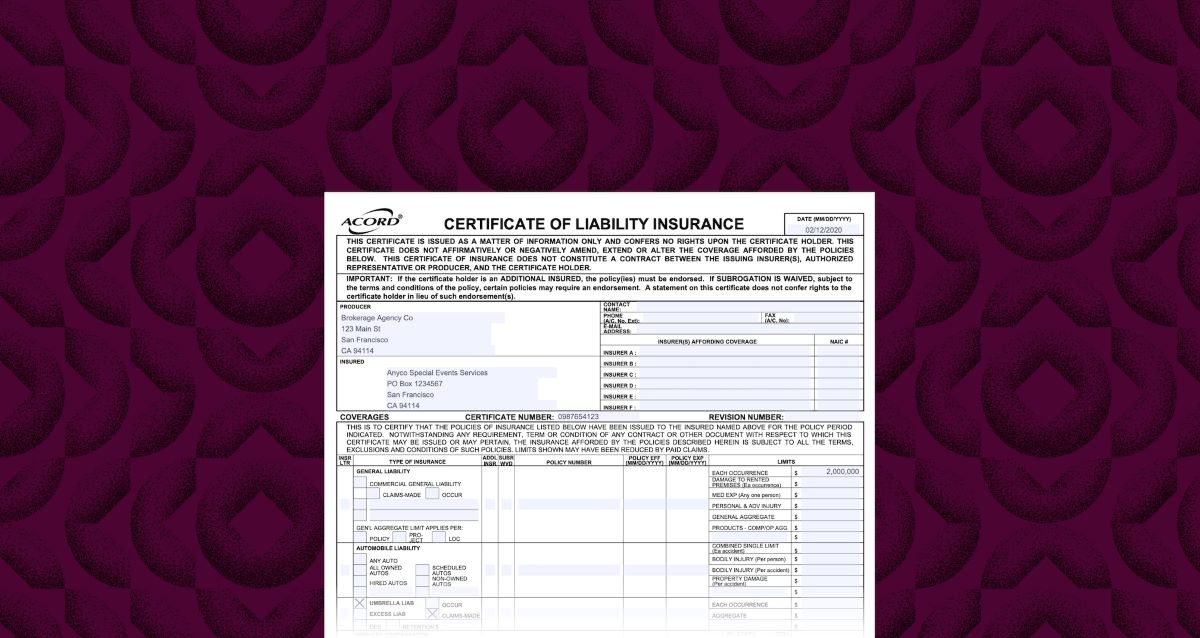Home>Finance>What Information A Check Register Includes For Checking Account Transactions


Finance
What Information A Check Register Includes For Checking Account Transactions
Modified: February 21, 2024
Ensure accurate financial recordkeeping for your checking account with a comprehensive check register. Track transactions and maintain an organized overview of your finances.
(Many of the links in this article redirect to a specific reviewed product. Your purchase of these products through affiliate links helps to generate commission for LiveWell, at no extra cost. Learn more)
Table of Contents
- Introduction
- Understanding Check Registers
- Purpose of a Check Register
- Basic Information in a Check Register
- Recording Deposit Transactions
- Recording Check Transactions
- Recording ATM Withdrawals
- Tracking Electronic Transactions
- Calculating Account Balance
- Reconciling Check Register with Bank Statement
- Importance of Maintaining an Accurate Check Register
- Conclusion
Introduction
Welcome to the world of personal finance! Managing your finances is an essential skill that plays a crucial role in achieving financial stability and success. One important aspect of personal finance is keeping track of your checking account transactions. And to do that effectively, you need a check register.
A check register is a simple yet powerful tool that helps you record and monitor all your checking account activities. It serves as a personal financial diary, providing a detailed record of every deposit, check, ATM withdrawal, and electronic transaction made from your account.
In this article, we will explore the components of a check register and the valuable information it includes. Understanding the importance of maintaining an accurate check register will empower you to take charge of your finances and make informed financial decisions.
Whether you’re just starting your financial journey or looking to improve your money management skills, this article will equip you with the knowledge needed to effectively utilize a check register for maximum financial control and organization.
Understanding Check Registers
A check register is essentially a ledger or a record book where you can keep track of your checking account transactions. It provides a snapshot of your financial activity and helps you maintain an accurate record of your account balance. By regularly updating your check register, you can ensure that you’re aware of your available funds and that your account is balanced.
Check registers are typically provided as part of your checkbook, but you can also create one electronically using spreadsheet software or financial management apps. Regardless of the format, the purpose of a check register remains the same – to track your financial transactions.
While online banking and mobile apps provide convenient access to account information, a check register offers several benefits. It allows you to have a physical record of your transactions, especially if you need to reference older transactions or in case of any discrepancies with your bank statement.
Additionally, a check register helps you develop financial discipline by actively tracking and managing your spending. It encourages you to monitor your expenses and be aware of your financial standing at all times.
Understanding the components and functions of a check register is essential for effective usage. In the following sections, we will delve into the information that a check register includes and guide you on how to use it to its full potential.
Purpose of a Check Register
The primary purpose of a check register is to help you keep a systematic record of your checking account transactions. It serves as a central hub for tracking your financial activity, ensuring that you have an accurate and up-to-date record of your account balance.
Here are some key purposes and benefits of using a check register:
- Track Transactions: A check register allows you to record deposits, checks, ATM withdrawals, and electronic transactions. By documenting each transaction, you can easily keep track of where your money is coming from and going to.
- Monitor Account Balance: By consistently updating your check register with deposits and withdrawals, you can calculate your current account balance. This helps you avoid overdrawing your account or falling into financial pitfalls.
- Budgeting and Planning: Through careful observation of your check register, you can analyze your spending patterns and identify areas where you may be overspending. This information can be used to create a budget and make adjustments to your spending habits, leading to better financial planning.
- Reference for Discrepancies: In case of discrepancies between your actual account balance and your bank statement, a check register can serve as a point of reference. Having a detailed record of your transactions allows you to identify any errors or fraudulent activities and resolve them with your bank accordingly.
- Audit and Financial Analysis: A check register provides a comprehensive history of your financial activity, which can be useful for auditing purposes or when preparing financial statements. It offers a clear picture of the cash flow in and out of your account, aiding in financial analysis and decision-making.
By understanding the purpose of a check register and utilizing it effectively, you can take control of your finances, make informed financial decisions, and ensure that your checking account remains accurate and balanced.
Basic Information in a Check Register
A check register contains essential information about your checking account transactions. By having a clear understanding of the basic information that should be included in a check register, you can maintain a comprehensive and accurate record of your financial activities.
Here are the key pieces of information to include in your check register:
- Date: Start by recording the date of each transaction in the check register. This allows you to organize your transactions chronologically and track the sequence of your financial activity.
- Description: Provide a brief description of the transaction. For deposits, you can mention the source of the deposit, such as “Paycheck” or “Cash Deposit.” For checks and withdrawals, specify the payee or purpose, such as “Rent Payment” or “Grocery Shopping.”
- Check Number: If you are writing a physical check, record the corresponding check number in the check register. This helps in cross-referencing with your bank statement or detecting any discrepancies.
- Deposit/Withdrawal Amount: Include the amount of each transaction in the check register. For deposits, record the amount being added to your account, while for checks and withdrawals, note the amount being deducted. This information allows you to calculate and track your account balance accurately.
- Running Balance: To maintain an up-to-date account balance, calculate a running balance for each transaction. Start with your initial account balance and adjust it with the deposits and withdrawals made, ideally writing it in a separate column. This running balance becomes the starting point for the next transaction.
By including these basic details in your check register, you can create a comprehensive and organized record of your checking account transactions. This information serves as a crucial reference point for managing your finances, reconciling your account, and monitoring your financial health.
Recording Deposit Transactions
Recording deposit transactions accurately in your check register is vital for maintaining an up-to-date and accurate account balance. Whether it’s a paycheck, cash deposit, or transfer from another account, here’s how you can effectively record deposit transactions in your check register:
- Date: Begin by jotting down the date of the deposit transaction. This allows you to keep track of your financial activity over time.
- Description: Provide a brief description of the deposit, such as “Paycheck,” “Cash Deposit,” or “Transfer from Savings.” This description helps you identify the source of the funds.
- Deposit Amount: Record the amount of the deposit transaction in the corresponding column. This amount should reflect the funds added to your checking account.
- Running Balance: Calculate the running balance by adding the deposit amount to the previous balance. Write this new balance in the designated column.
Remember to be diligent and accurate when recording deposit transactions. Double-check that the date, description, and amount are correct to avoid discrepancies in your records.
In some cases, you may receive multiple deposits in a single day or have different sources for the same day. If this happens, make sure to record each deposit separately in your check register, maintaining a clear and detailed record of all funds added to your checking account.
By consistently recording deposit transactions in your check register, you can keep track of your income sources, monitor the growth of your checking account, and have a clear understanding of your available funds.
Recording Check Transactions
Keeping an accurate record of your check transactions is essential for effectively managing your checking account and tracking your expenses. Here’s a step-by-step guide on how to record check transactions in your check register:
- Date: Begin by entering the date of the check transaction in your check register. This helps you organize your financial activity in chronological order.
- Description: Provide a clear and concise description of the check transaction. Include the payee, purpose, or any relevant details that help you identify the transaction later on. For example, if you’re writing a check for rent, you can write “Rent Payment – Landlord’s Name” as the description.
- Check Number: Fill in the check number associated with the transaction. This helps you track the check in case you need to reference it or reconcile it with your bank statement.
- Withdrawal Amount: Enter the amount of the check transaction in the appropriate column. This amount should reflect the funds deducted from your checking account.
- Running Balance: Calculate the running balance after deducting the check amount from the previous balance. Write the new balance in the designated column.
Make sure to record each check transaction accurately, taking care to note the correct date, payee, amount, and check number. This level of detail will help you maintain a comprehensive and organized record of your expenses.
If you’re using pre-printed checks, remember to cross-reference the check number you recorded in your register with the number on the physical check itself. This ensures that you have a complete and accurate record of every check transaction.
By consistently recording check transactions in your check register, you can closely monitor your spending, keep track of payments made, and have a clear understanding of your available funds.
Recording ATM Withdrawals
ATM withdrawals are a common way to access cash from your checking account. To maintain an accurate record of these transactions and ensure your check register reflects the correct account balance, follow these steps:
- Date: Begin by entering the date of the ATM withdrawal in your check register. This helps you track the timing of the transaction.
- Description: Provide a brief description of the ATM withdrawal. You can simply write “ATM Withdrawal” or specify the purpose of the withdrawal, such as “Cash for Groceries.”
- Withdrawal Amount: Enter the amount of the ATM withdrawal in the appropriate column. This should reflect the funds deducted from your checking account.
- Running Balance: Calculate the running balance after deducting the withdrawal amount from the previous balance. Write the new balance in the designated column.
When recording ATM withdrawals, it’s important to accurately note the date, amount, and description for each transaction. This way, you can easily track your cash flow and cross-reference your check register with your bank statement.
Additionally, consider keeping the ATM receipt and attaching it to your check register as a reference. This can be helpful in case you need to verify any discrepancies between your recorded amount and the actual withdrawal.
By consistently recording ATM withdrawals in your check register, you can keep track of your cash expenditures, maintain an accurate record of your account balance, and have a clear understanding of your available funds.
Tracking Electronic Transactions
In today’s digital age, electronic transactions have become increasingly common. Whether it’s online purchases, bill payments, or transfers between accounts, accurately tracking electronic transactions in your check register is essential. Here’s how you can do it effectively:
- Date: Start by recording the date of the electronic transaction in your check register. This allows you to maintain a chronological record of your financial activity.
- Description: Provide a clear description of the electronic transaction. Include the recipient or purpose of the transaction to help you identify it in the future. For example, if you paid a utility bill online, you can write “Utility Bill Payment – Company Name” as the description.
- Withdrawal or Deposit Amount: Depending on the nature of the electronic transaction, record either the amount withdrawn from or deposited into your checking account. For example, if you transfer funds from your checking account to your savings account, record the withdrawal amount. If you receive a direct deposit, record the deposit amount.
- Running Balance: Calculate the running balance after deducting or adding the transaction amount to the previous balance. Update the balance in the designated column.
It’s important to note that electronic transactions may not immediately appear in your check register, especially in the case of pending transactions or delays in processing. Ensure that you regularly review your bank statements to cross-reference and update your check register with any electronic transactions that may not have been recorded initially.
Additionally, if you use online banking or financial management apps, you can consider linking them to your check register to automatically import and reconcile electronic transactions. This can streamline the process and help minimize the chances of human error.
By accurately tracking electronic transactions in your check register, you can maintain a comprehensive record of your financial activity, monitor your account balance, and ensure that your check register aligns with your bank statements.
Calculating Account Balance
Calculating your account balance is an essential part of managing your checking account and staying on top of your personal finances. By accurately calculating your account balance in your check register, you can monitor your available funds and make informed financial decisions. Here’s how you can do it:
1. Start with your initial account balance: Begin by noting down the initial balance of your checking account in your check register. This is the amount of money you had in your account at the beginning of the tracking period.
2. Add deposits: As you receive deposits in your checking account, update your check register by adding the deposit amount to the initial balance. This reflects the additional funds that have been added to your account.
3. Deduct withdrawals and checks: Whenever you make a withdrawal, write a check, or have any other deductions from your checking account, subtract the respective amount from the running balance. This reflects the decrease in funds due to the transaction.
4. Include ATM withdrawals and electronic transactions: Don’t forget to subtract the amount of ATM withdrawals and other electronic transactions from your running balance. These transactions also affect your account balance and need to be reflected in your check register.
5. Calculate the running balance: Continuously update the running balance in your check register after every transaction. By deducting withdrawals and adding deposits to the previous balance, you arrive at the new account balance.
6. Regularly reconcile with your bank statement: It is important to compare the balance in your check register with the balance provided in your bank statement. This process, known as reconciliation, helps identify any discrepancies or errors and ensures that your check register accurately reflects your account balance.
Calculating your account balance in your check register allows you to have a clear understanding of your available funds at any given time. By keeping accurate records and regularly updating your check register, you can make more informed financial decisions and avoid overdrawing your account.
Reconciling Check Register with Bank Statement
Reconciling your check register with your bank statement is a crucial step in maintaining the accuracy of your financial records. By comparing the transactions in your check register with the transactions listed in your bank statement, you can identify any discrepancies, errors, or fraudulent activities. Here’s how you can effectively reconcile your check register:
- Gather your bank statement: Obtain your bank statement for the period you’re reconciling. This statement shows the transactions processed by your bank during that time.
- Compare transactions: Go through each transaction listed in your bank statement and compare it with the corresponding transactions in your check register. Ensure that the date, description, and amounts match.
- Check off matched transactions: As you confirm that a transaction in your check register matches the one in the bank statement, mark it off as reconciled by placing a checkmark or highlighting it. This helps you keep track of which transactions have been reviewed.
- Investigate discrepancies: If you come across any discrepancies between your check register and the bank statement, thoroughly examine the details. Check for any errors in recording, missing transactions, or unauthorized charges. Contact your bank if you need clarification or suspect fraudulent activity.
- Make adjustments: In case you find any errors or missing transactions, make the necessary adjustments in your check register. This ensures that your records align with the information provided by your bank.
- Update your balance: After reconciling all the transactions, update your account balance in the check register to match the ending balance mentioned on your bank statement. This ensures that your check register accurately reflects the current state of your account.
Reconciling your check register with your bank statement not only helps you maintain accurate records but also serves as a vital tool in detecting any unauthorized transactions or errors. By conducting this process regularly, you can have confidence in the accuracy of your financial records and ensure the security of your checking account.
Importance of Maintaining an Accurate Check Register
Maintaining an accurate check register is essential for effective financial management and ensuring the health of your checking account. By keeping a detailed and up-to-date record of your transactions, you can enjoy the following benefits:
1. Financial Awareness and Control: A check register allows you to stay informed about your financial activities. By recording deposits, withdrawals, and other transactions, you can have a clear understanding of where your money is coming from and how it is being spent. This awareness empowers you to take control of your finances and make informed decisions.
2. Accurate Account Balancing: With an accurate check register, you can easily calculate and monitor your account balance. By consistently updating your register with deposits, checks, and withdrawals, you can ensure that your recorded balance aligns with the actual balance in your checking account. This helps you avoid overdrawing your account and simplifies budgeting and financial planning.
3. Fraud Detection: A comprehensive check register acts as a defense against fraudulent activities. By regularly reviewing your transactions and comparing them to your bank statements, you can quickly identify any unauthorized or suspicious charges. This allows you to take immediate action and report any fraudulent activity to your bank.
4. Reconciliation: Reconciling your check register with your bank statement on a regular basis is crucial. This process ensures that your records accurately reflect the transactions processed by your bank. By identifying and rectifying any discrepancies, you can maintain the integrity and accuracy of your financial records.
5. Financial Planning and Budgeting: A well-maintained check register provides valuable information for financial planning and budgeting. By analyzing your recorded transactions, you can identify spending patterns, track expenses, and make informed decisions about budget allocation. This knowledge allows you to prioritize financial goals and manage your money effectively.
6. Documentation: Keeping an accurate check register serves as a valuable documentation tool. It provides a historical record of your financial activities, which can be useful when applying for loans, preparing tax returns, or resolving any disputes with vendors or service providers.
Maintaining an accurate check register is not only a responsible financial practice but also a key part of ensuring your financial well-being. By staying organized, vigilant, and diligent in recording and updating your transactions, you can maintain control over your finances and make informed decisions toward achieving your financial goals.
Conclusion
A well-maintained check register is an invaluable tool for managing your finances effectively and keeping track of your checking account transactions. By recording deposits, checks, ATM withdrawals, and electronic transactions, you can have a clear picture of your financial activities and maintain an accurate account balance.
Throughout this article, we’ve explored the various components of a check register and discussed the importance of maintaining its accuracy. From understanding the purpose of a check register to reconciling it with your bank statement, each step plays a vital role in ensuring your financial records align with the transactions processed by your bank.
With an accurate check register, you gain financial awareness and control. You can track your spending, identify areas where you can save or cut back, and make informed decisions about your personal finances. Additionally, an up-to-date check register serves as a defense against fraud, enabling you to quickly detect and report any unauthorized activities.
By regularly reconciling your check register and maintaining its accuracy, you can optimize your financial planning and budgeting efforts. You can analyze your spending patterns, set realistic financial goals, and confidently navigate your financial journey.
Remember, it’s important to consistently update your check register, cross-reference it with your bank statements, and make any necessary adjustments or corrections. This practice will not only help you avoid financial pitfalls but also provide you with a comprehensive financial record that can be invaluable for various financial and auditing purposes.
So, take the time to establish the habit of maintaining an accurate check register. Embrace it as a powerful tool in your financial toolkit, and let it guide you towards financial stability, improved money management, and a brighter financial future.














